Unfortunately, whether it’s a car crash or a spree shooter, the option of self-defense doesn’t always exist. Even if you technically could engage with a ballistic solution, the best option may very well be to unass the A-O, seek cover or a barricade, and have basic trauma care gear and training under your belt. Some basic training and a small medical kit can go a very long way.
At a recent gun industry press trip, I met with writers and professionals from around the country. On my backpack? The basic medical kit seen above. Out of approximately 20 of us, I believe only three of us carried medical supplies and one of those was an active law enforcement investigator.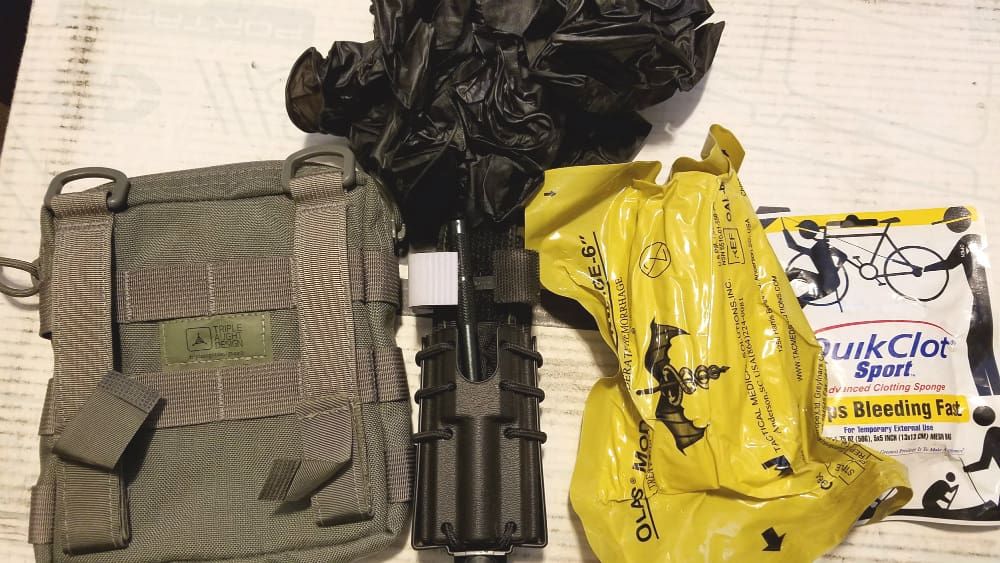
My kit is embarrassingly sparse with an admittedly myopic focus on bleeding, but it’s more and better than nothing.
I carry a tourniquet, Olaes compression bandage, QuickClot (a larger kit version is available here), and nitrile gloves. Those hotlinks are to the actual products I’m carrying. I have the same items in the glove compartments of our vehicles as well. And I’ll list some other options below.
Perhaps the thing about my kit is that I don’t actually carry any of it on my person proper. My med pack is attached to the MOLLE webbing of my backpack (a TAD Fast Pack Lightspeed) and is popped off and dropped in my range bag (or elsewhere) if I’m traveling sans backpack.
While each car has a kit, I can’t say that I would have necessarily had any of these things on me at an event like a concert.
I may have to change that. One of the other guys equipped with basic trauma care supplies at that press event was Riley Bowman, Director of Training & Media Production at ConcealedCarry.com. Riley has carried medical supplies and other goodies in an ankle rig for many years now.
While I’m not sure I’ll go the ankle carry route (US Palm closed its doors, but other ankle medical systems include the Ricci, Rescue Essential’s AMS, and the Frog.Pro SFD-Responder), Riley’s choice has inspired me to transfer an even more basic kit to my on-person carry and beef up my off-person kits.
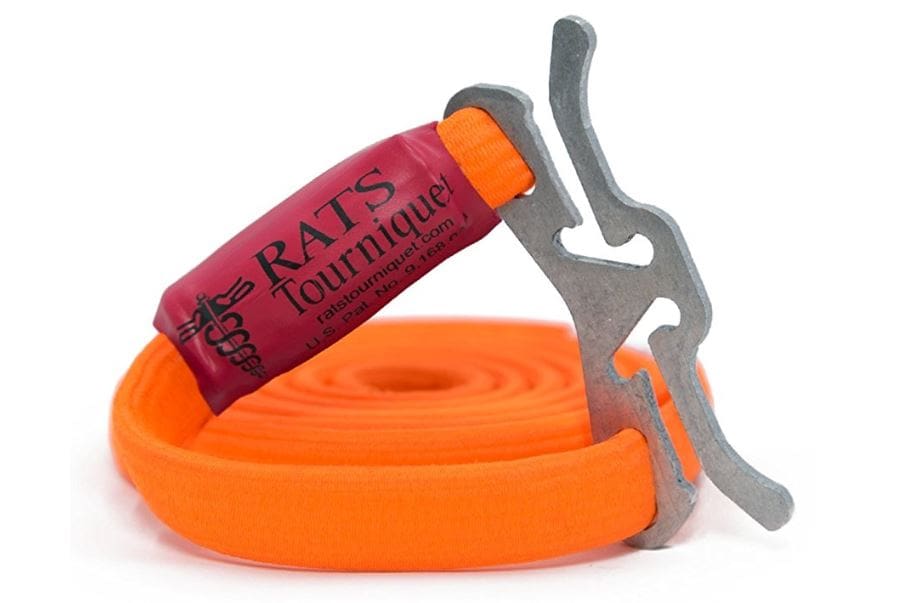 One option is a RATS tourniquet. That’s Rapid Application Tourniquet System. It’s fast and easy, though most professionals seem to prefer the CAT-style that I currently have in my pack and vehicles for a couple of reasons (easier to apply sufficient pressure, wider strap, etc). The RATS has two main advantages, though: it’s more compact and it works much better on smaller limbs such as on kids and animals (e.g. police K9s).
One option is a RATS tourniquet. That’s Rapid Application Tourniquet System. It’s fast and easy, though most professionals seem to prefer the CAT-style that I currently have in my pack and vehicles for a couple of reasons (easier to apply sufficient pressure, wider strap, etc). The RATS has two main advantages, though: it’s more compact and it works much better on smaller limbs such as on kids and animals (e.g. police K9s).
Often sold with a tight-fitting elastic sleeve, a RATS is easy to simply toss in a pocket. Some folks choose to wear them on top of their belt or even as a belt. The easier it is to have on you, the more likely you are to have it on you, so I’ve ordered up a RATS to experiment with carrying it daily.
For my pack, I’ll be adding a second tourniquet to each, plus an airway, tape and gauze, and chest seal like the stuff included in the Tactical Distrubutors kit seen above. Via that link you’ll also see the ITS ETA Tallboy and Fatboy Trauma Kit Pouches, which are quick-access packs designed for storing, in an organized manner, all of the sorts of medical trauma supplies we’re kicking around here.

As for CAT-style tourniquets, after similar recommendations from multiple people in the know, I’ve switched from a cheaper versions to better models with an aluminum windlass and Kevlar reinforcements. They’re available in a two-pack here.

The same goes for Israeli bandages. Don’t go for the least expensive option. That said, I have similar Olaes bandage in my packs, but all of this wrapping and compression could also be achieved with ACE Wrap and Kerlix.
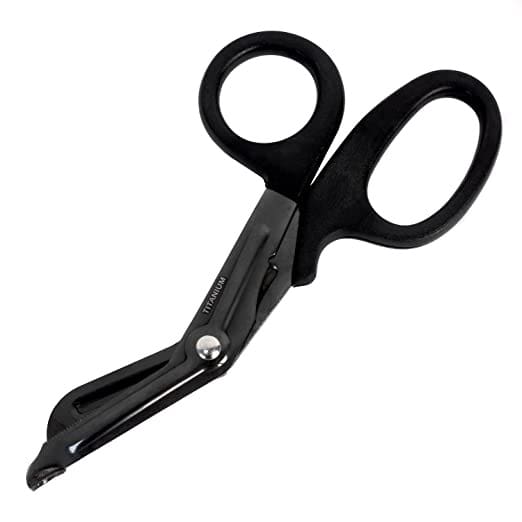
Especially if you go the ACE and gauze route — but even if you don’t — trauma shears come in extremely handy. Or so I’ve been told. I have approximately zero of them and am now adding one to each of my kits.
Finally, none of this equipment is particularly helpful without some training. I took some basic training with Tactical Fitness Austin. It was immensely educational, teaching not only the medical side, but also the evac side.
If you can’t shoot back — or often even if you can — get off the X, seek cover, and be prepared. There were stories of concert-goers saving lives by applying tourniquets in Las Vegas, and it was left to them to evacuate victims to where medical first responders were staged some distance from the scene until it was declared safe. With some basic training and even sparse equipment, anyone can help save lives.

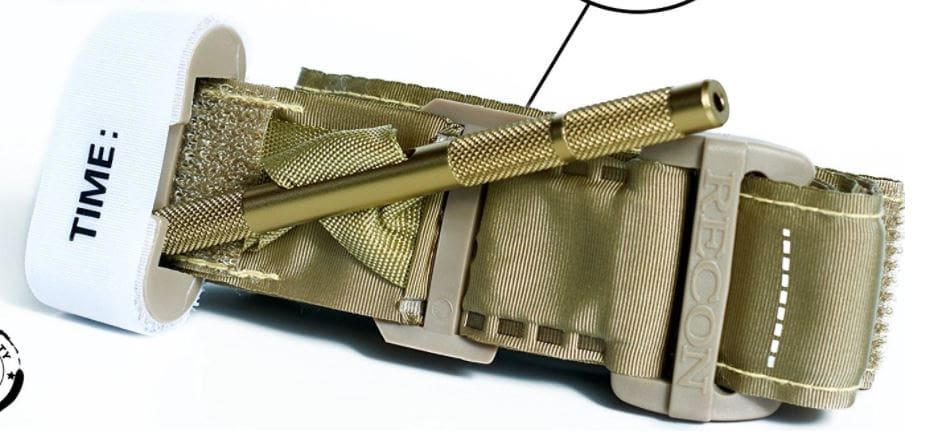
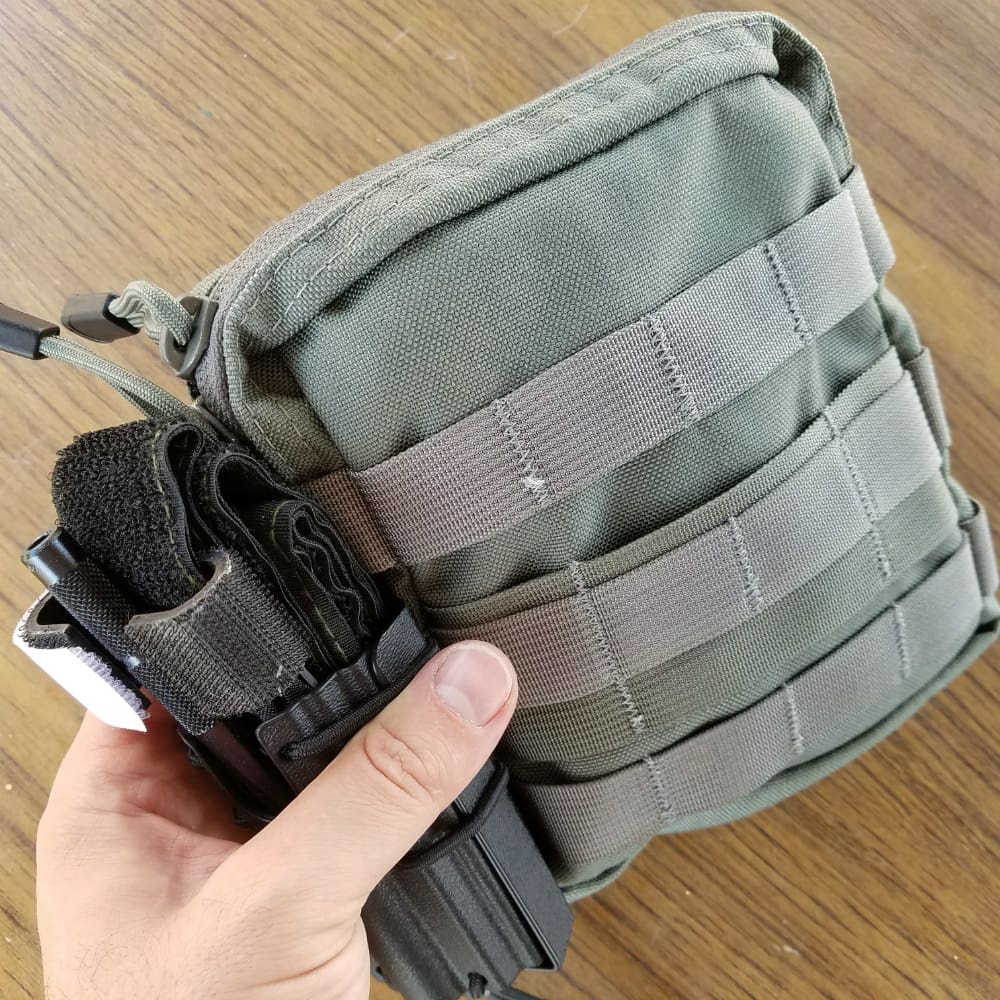







I appreciate this information and encouragement. I had intended to acquire some of these items and lost my links to them. This article will be very helpful in that regard.
I have a Vertx backpack with four compartments. The main one is for “stuff”. Another is set up to accept a gun and mags and be easily accessed. The other two are equipped with TQs, gauze, quickclots, eye shields, nitrile gloves, etc. Basically items that may need to be immediately employed for GSWs until professional EMS arrives.
Cuz ya never know. I might be the first responder to deal with the actual shooter. Or another good guy might have already put him down and I’ll be the first responder to the victims.
When venturing into the springtime forest or wandering around the fishing hole you are just as prone to be eaten like everything else. Stock up on mosquito repellent, poison ivy ointments, Benadryl tabs, wasp spray, etc.
I have a few Wilder Tactical IFACs in my vehicles, range bag, and home.
I always have an IFAC handy on range days.
Murphy can sometimes be a real d!ck.
2nd time in 2 days similar subject. As before
RATS – just carry a boot lace and a stick (as 1923)
CAT – somewhat better but critical parts are plastic (.mil low bid is the only reason well known).
Get a SOFTT-W – no plastic parts. You’re going to be carrying the tourniquet for years without a need to use it (which is NOT a recipe for plastic).
The problem with laces and the RATS is that their thinness can cause ligature damage to tissue. That’s why they aren’t TCCC approved and why RATS made a company called TCCC and gave themselves ‘approval.’
I like the SOFTT-W and metal windlass, especially when applying to a beefy thigh, but I find it easier to self administer the CAT to my arm. Both actually are TCCC approved.
If the injurered person you come across is dacian or Miner49er then apply tourniquet around their neck.
They would be the type you saw in 2020 applying a TQ to a fucking flesh wound someone got while gardening their “indigenous only gardens” in CHOP/CHAZ.
.40 cal,
Well, THAT was mighty unChristian of you! Please don’t choke out my two favorite pinatas; then I’d be left with Prince Albert the Fake-Brit Ponce and jsled (who seems to run and hide for weeks/months at a time). How can I play ‘whack-a-mole’, if you kill all my moles???
Very good article. In fact all of today’s articles today have been good. I like the med articles best. When I was working I kept a well stocked kit in my car. All I had to do was stop by EMS. They were more than happy to arrive on scene and find some of their work had already been done. Just before I retired a guy from a local P.D. murdered his “on the side girlfriend”. He was sloppy. It didn’t take but about 48 hours to find the shallow grave. He was monitoring our frequency.He walked outside and shot himself with in the chest with his duty weapon. I left my kit at the scene when I boarded Life Flight with him. DOA at the ER. My kit disappeared. Understand, the Eagle Industries bag, Spyderco rescue knife, etc I paid for out of my own pocket. Cops are worse thieves than G.I.s.
Jeremy,
No beef with any of your advice, just an observation. START with training. I can’t tell you how many guys I know who carry tourniquets, and have never applied one, or been trained to apply one. If it’s my only option, I’ll apply my own damn tourniquet before I’ll let some noob do it wrong.
OTOH, even a poorly-applied tourniquet is PROBABLY better than none at all. Ya pays your money, and ya takes your chances.
I am a huge fan of carrying an IFAK. One in my car, one in my EDC pouch, one in my range bag, a tiny one in my pocket WHEREVER I am. I offer this challenge to everyone out there, and it applies to IFAKs, but also all other EDC – open your kit, lay it out, and then (i) identify every item, (ii) explain how/when you would use it, (iii) have the actual ABILITY to use it, (iv) make a list of what’s NOT in there.
The absolute first requirement for survival is a functioning brain, in possession of (or able to quickly glean) relevant knowledge. All other EDC is just . . . tools.
Good list, but you really shouldn’t link to Amazon for any of this. They have a huge problem with counterfeits and people have literally died when EMS personnel have used Amazon TQs that have failed due to being fakes. If you’re carrying gear to save a life, spend the extra $3 or whatever to buy from the actual company. Seriously.
Stop trying to make everything super convenient. Some things aren’t and shouldn’t be.
8″x8″x2.2″ at 1.1lbs and you have a med kit for everything from minor cuts to GSWs plus common meds and accessories and in a bag you can attach to your belt with a drop-leg set up so you can use your leg like a desk and keep your hands free.
Add a gram or two and carry some extra aspirin for the fatties that have a heart attack in line in front of you at a checkout counter.
Learn to carry a bag and not give a fuck if someone asks about your “murse”. Now, you can carry a book and water bottle around with you and exercise your mind while waiting around on whatever you wait around on while remaining hydrated.
I’m a little mystified as to why these recent articles are concentrating so heavily on tourniquets and bandages but are ignoring the most prominent trait of severe injury of the types envisioned (e.g. gun shot) which is the heart simply stopping and the need for CPR. No one has mentioned the possibility of including a CPR mask in their ‘trauma’ kits.
The heart stopping following a GSW is due to blood loss in most cases.
There are two types of blood loss, the kind you can deal with and the kind a surgeon can deal with but which you basically can’t. TQ’s and Bandages stop the stuff you can deal with. You can expand your capacity slightly with something like a Celox injector but most GSWs to the abdomen will require a surgeon to get in there.
As such, you deal with what you can deal with and hope that it’s a high enough percentage of the total blood loss that you extend the person’s life long enough to reach someone who can deal with the issues you can’t.
As for CPR, that works for a classic heart attack because there isn’t a leak in the system.
It doesn’t fix leaky pipes caused by a GSW. Running CPR on a person who’s bleeding to death from a hemorrhage you haven’t dealt with isn’t entirely worthless but it’s going to rapidly diminish returns as you pump out blood through the hemorrhage and their BP continues to drop. Soon you’ll be pushing too little fluid to do much of anything useful.
This is why “Circulation” comes after “Massive Hemorrhage” in the MARCH protocol. The bleeding needs to be stopped, as best as possible, before we care about the pump that keeps things moving. Otherwise we’re just accelerating the loss of the fluid the pump is trying to move.
Which is why if they’re conscious you want to ask constantly if they’re thirsty and give them fluids if they are. The body absorbs water pretty quick and it will help keep their BP up and help to prevent heart stoppage until you can get them on an IV and eventually on a blood transfusion. Bottled water very likely saved Steve Scalise during the Congressional Baseball Shooting.
An IFAK and a “blowout kit” are different, though we don’t often make the distinction. A CPR mask in a kit designed for GSWs, mostly is either unnecessary or not useful. It’s not completely worthless but as an item it will have limited application where it’s truly going to make a difference. An extra TQ or bandage/dose of QuikClot/Celox is statistically more useful.
In an IFAK, which technically has a wider application, it makes a lot more sense because you’re more likely to see a situation where it’s higher up the chain.
*Chock.